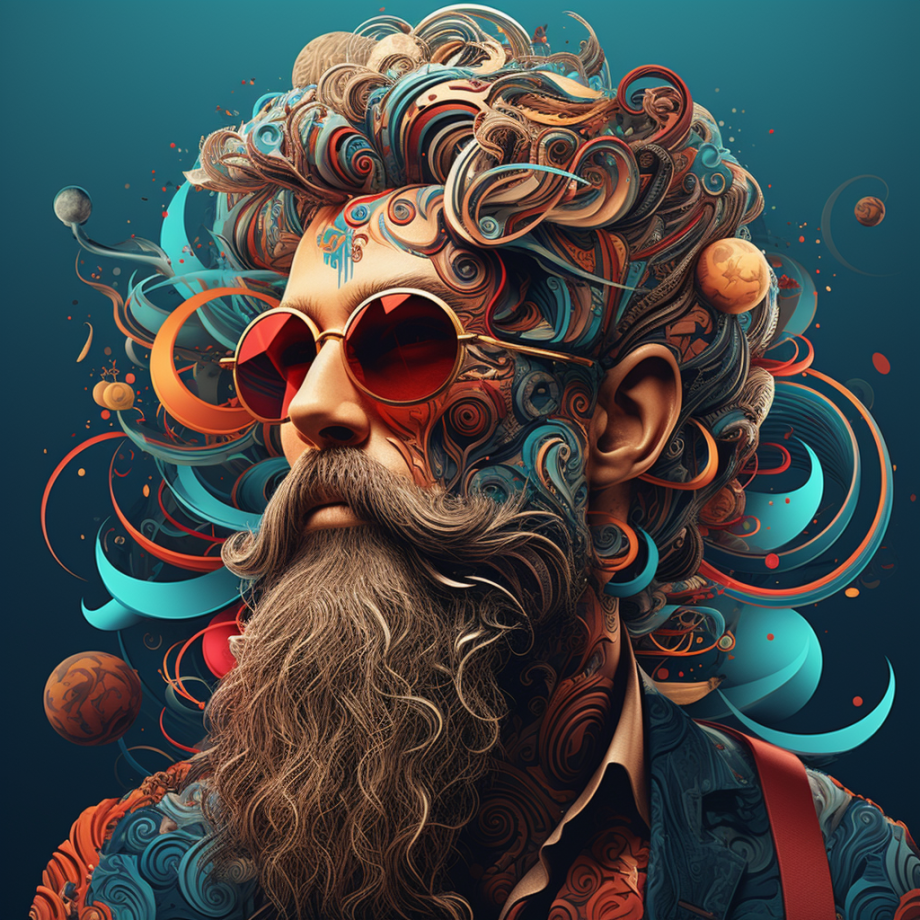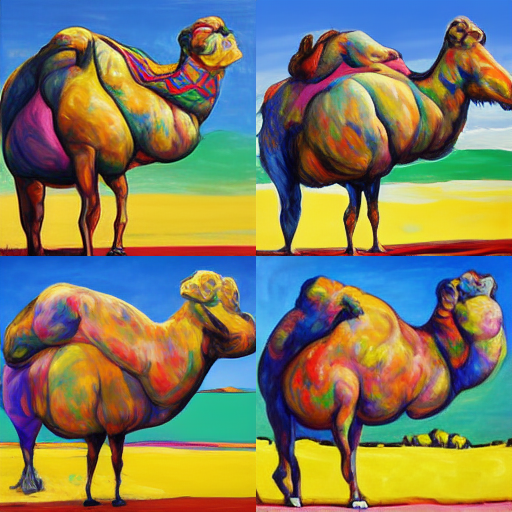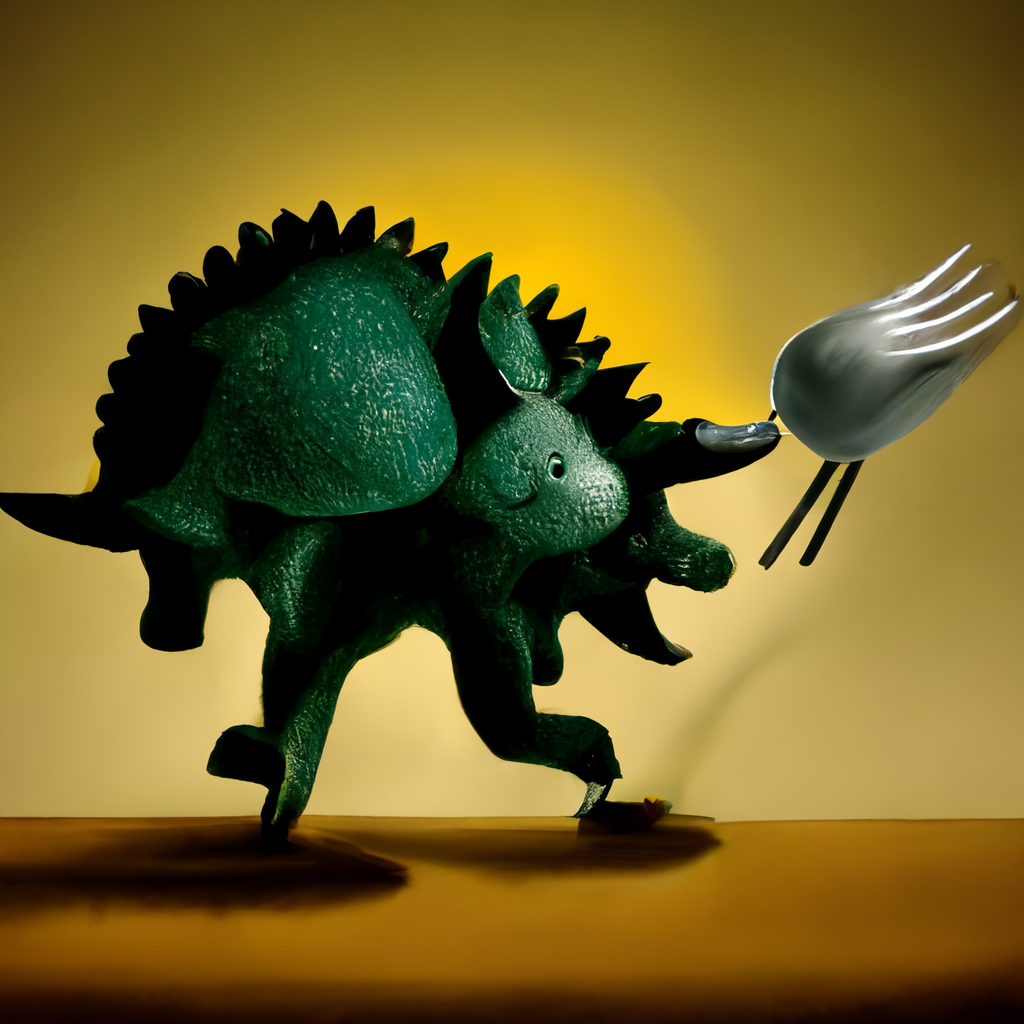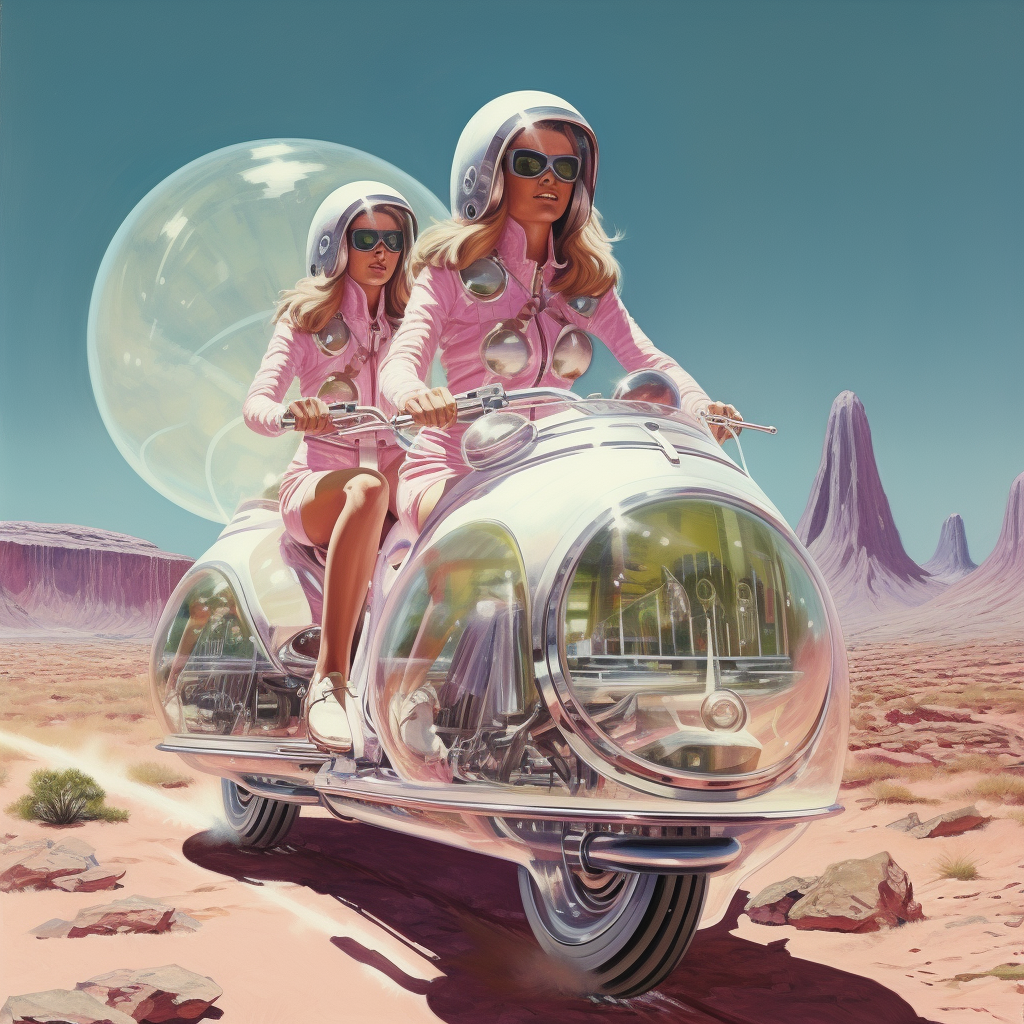
Is the design profession on the verge of obsolescence?
As many designers are aware, the influx of AI (artificial intelligence) programs recently has created a huge uproar in the creative world, so DesCan reached out to designers across Canada and the US to see how they are approaching or utilizing some of the new tools that are gaining traction/notoriety. The biggest concern from many on our panel was the source of the imagery that many AI programs use to create their “design/artwork.” Certainly from a legal perspective, in Canada the intellectual property laws are different than the US, so we potentially have a bit more protection, but that puts more onus on designers using AI to check to see where their image was really sourced from.
Our panelists are Marian Bantjes, F.DesCan (Bowen Island, BC); Allan Dowdeswell, CDP (Saskatoon, SK); Dean Van De Walle, CDP (Winnipeg, MB); David Coates, F.DesCan (Vancouver, BC); Susan Mavor, CDP (Vancouver, BC); Mark Pilon (Vancouver, BC); Steven Rosenberg, F.DesCan (Winnipeg, MB); Dave Mason, F.DesCan (Chicago, IL) and Mike Cober, CDP (Vancouver, BC).


Are you currently using AI tools (MidJourney, ChatGPT, etc.) in your design practice or classroom? If not, why?
MB: YES. Midjourney.
AD: I tried out MidJourney briefly in July of 2022, had some fun, and did not return. (See my “overweight fauvist camel” and “stegosaurus attacking a tortellini” images attached). This is mostly because my own business is more coding than design. The tech has improved a lot since that time obviously, and I would consider using it in cases where I would need a concept illustrated much in the same way one would use Photoshop, etc. to manipulate a photo. Having said that, I would gain much more satisfaction from having a concept and executing the rendering myself using the appropriate physical medium or software.
DVdW: We are NOT. Our lottery clients are EXTREMELY risk averse, and we are encouraging them to shy away from it until issues of trademark and ownership can be settled. I’ve actually written a few internal memos for our company to help explain the issues and ramifications to our sales team to explain to their clients.
DC: We play around with MidJourney, but more out of curiosity and experimentation than for real work. Prompts will most often yield results that I would put in a “happy fantasy mistakes” category. It’s an interesting tool to quickly explore unexpected results for concepts we may have. But it’s just that, a tool for process and experimentation.
SM: Yes, although we don’t use those two specifically. There is no rule against it in our studio and I have played around with Midjourney and have colleagues in Landscape Architecture that use it in very interesting ways. More and more new designers will be much more versed in the use of these tools, so I can see this changing over the next few years.
There is use of Pinterest, Google image searches, Photoshop and Illustrator types of AI in our work all the time and it would seem regressive to restrict the use of these tools when searching for examples of use of coreten steel or engraved glass to share with clients who want to see precedents. I remember learning wax paste-up at Emily Carr “in case the power went out”, which always makes me laugh when the power goes out. Do we pull out the waxer? No, we go for coffee. There was so much fear then among the teachers who didn’t know these tools.
I also use text to speech and speech to text all the time in my academic reading and writing. It mangles citations and footnotes, as well as non-English and specifically Indigenous language, but I get past it because it’s a huge time saver in that I can walk my dog, do the dishes, and read academic books and articles at the same time. Plus I learn from spoken word much more effectively. I might try and outline of my thesis using Chat GPT to see if it’s any better than what I have come up with.
MP: Within our unit, we primarily use AI as a production tool, mostly as a visual enhancer and a scalability solution. AI scaler tools have been a game-changer for me, significantly reducing the time spent ‘fixing’ low-resolution images provided by clients. Additionally, I’ve been exploring the new generative fill feature in the Photoshop Beta, which has proven to be a valuable asset. To stretch the boundaries of creativity I’ve also been using Midjourney, a tool that helps me conceptualize challenging images or illustrations. It’s an incredible resource.
SR: I have two uses for AI. The more important is for upping the resolution on images. We initially used Photoshop that did a so-so job. We moved on to Genuine Fractals that was much better which then became ON1. For the past two years or so we have been using Topaz Gigapixel AI which uses AI. In this case the program is not replacing any images, it is making smarter choices about pixels. I did do a search to see if Topaz uses external images and came up nothing. Also, it works offline which certainly indicates that it is self contained and does not source anything external.
My second use is to generate captions for movies that have none. Since its role is to convert speech to text it is easy to see that it also does not source any external information.
DM: No. I’ve explored to some extent, but haven’t seen any real advantage to it for the kind of work in which I’m currently involved. Plus I’m old enough to remember when desktop publishing was going to end my design career. AI is still in its infancy, but evolving fast. Obviously people who think for a living will have to evolve faster or move to something else. My going-to-college job – core drilling concrete – seems like it might still be AI free for a few years…
MC: At the Wilson School of Design we have courses specifically dedicated to new and emerging technologies as it relates to graphic design and marketing. With the sudden rise of AI we will look to include these tools within certain courses and projects. This is new technology and the classroom is the perfect space to explore their capabilities and better understand their strengths, weaknesses, opportunities and threats. I believe that early adoption within the classroom setting affords a better understanding of the tools and their context and allows time to develop a perspective on how those tools can be used in a productive and ethical manner.


Do you have any concerns about trademark infringement, or how do you work around them?
MB: NO. Easy:
Don’t try to emulate other people’s work or use “in the style of”.
Don’t use “illustration” style.
Don’t feed it existing images unless they’re your own.
Don’t ask it to generate living people.
AD: For trademark infringement, I am somewhat sympathetic to the views of the Graphic Artists Guild. If anyone feels motivated to pursue creating laws that govern image use in datasets, I would not speak against it. I think however it would be a very big challenge tracking down where all the data came from at this point, due to the sheer immensity of these datasets and the abstraction thereof which happens in the storing process. It might take the skills of yet another complex A.I. to reverse engineer all the data and discern how it originated, unless the A.I. designers were very careful to document that information from the beginning. Short of all that happening, I think the best we can do as individuals is to make a conscious effort to remunerate persons whose styles we emulate, and give credit as much as possible to them or identify when A.I. has been used.
DVdW: Of course. We are concerned about our clients facing a lawsuit over using other peoples art (and that transferring to us as most of our contracts indemnify them), but also about our art being used without copyright. I feel like this is a pivotal moment in our profession, right up there with the introduction of the desktop computer and how it opened graphic design to the masses. We have to be seen as the experts in the room, otherwise the quality of the whole industry will go down. Also, I have issues ethically with using other people’s work without fair compensation, and would not advocate for products that could be using work without permission.
DC: We don’t use anything AI generates in our final work, apart from using Photoshop’s AI, perhaps, to make a vertical image into horizontal by adding background. We either produce in house, or hire professional photographers, videographers, illustrators or writers. We see AI as just a tool for experimentation. It may generate something unexpected that is worthy of exploring further through your own hand or lens, but be wary of using these images in your final artwork, unless perhaps for personal enjoyment.
SM: Of course, but these issues exist with the internet as it is now. We see our work used as precedents in other studio’s presentations. And we do the same with theirs. All from internet searches. The trick is not to copy any directly from Midjourney or Chat GPT. You have to use it as an exploration tool, just like precedents. Not as the final answer.
MP: While we’ve only published one AI-generated image on our Beyond UBC platform, I must admit that obtaining the exact results I needed or wanted was a challenge. Cleaning up AI-generated images still demands a significant time investment. Nevertheless, I’ve found AI to be a good alternative to many stock art options, offering a good starting point. Currently my primary means of sourcing AI created imagery is through Google Image search, which is not ideal, but is the only practical tool available to us at the moment. This aspect still makes me think twice about publishing any AI generated work that has not been human-altered.
SR: For my use of AI I see no legal ramifications. However, the world is seeing ongoing law suits from authors, artists and others who have had their material input into AI engines without their consent. Right now this is unregulated and anyone who uses AI generated material should do so with caution (or not at all).We as designers must always be aware of ownership and usage rights. If we cannot prove to our client that there is at minimum usage rights for images or copy, we put our clients as well as ourselves at risk.
DM: Sure. IP law is trailing AI development. Of course, AI will write the new IP laws that govern it, so that’ll be cool. My larger concerns revolve around disinformation — the weaponization of these tools. We’ll need an AI to tell us if the Tom Hanks we see selling dental implants is real or fake, and a lot worse. Eventually we won’t be able to trust anything we see or hear. Hell, we’re almost there now.
MC: I think it is like any other creative process. You are responsible for what you put out in the world. No matter if a machine or a human took too much inspiration from a specific source.

Image prompt: A mid 50s male graphic designer contemplating the possibilities of AI. Note: I meant a graphic designer who’s age was mid 50s and not a graphic designer from the mid 1950s.
What is your advice to designers who are looking to use AI in their practice/classroom?
MB: Go for it. Use the above rules. Teach people to make new, interesting things in all circumstances, including AI.
AD: It is important to consider how you can best serve your clients in terms of quality or expense. It is important to consider whether you are robbing other people of their ideas, or removing opportunities for them to provide images and be paid. Perhaps most importantly you should also ask, “Am I robbing myself or others of job satisfaction?” I got into design because I like illustrating, designing and being creative. I like improving my skills and having a sense of accomplishment when I create something. I enjoy the process of creation, and the discovery of solutions by myself. The more of these tasks I hand over to A.I., the less I can have the satisfaction of saying “I did that!” or “I grew in my skill” or even “my illustrator/photographer friend did that!” I would rather create something truly new than something that simply got the job done. In a similar way, I’d rather have a hand-carved wooden sculpture in my living room than a 3D-printed one.
DVdW: Don’t. kidding. Look for ways to use it to make your job easier, not do the job for you. things like Adobe smart filters are AI and they get you to the finish-line sooner. also: educate yourself on where the AI you want to use was trained. if you start seeing red flags look elsewhere, if they aren’t open with what data they are using there is a good chance it is not kosher. that’s why for better or worse I am liking the Adobe Firefly beta, at least the data is from their stock photography (even if they are forcing the contributors to go along with it).
DC: We find ChatGPT is only good for cleaning up messy copy, it seems to be reasonably good at sentence structure. It has a definite style, or lack of style as it were, when you actually ask it to write something for you. It loves the bullet points.
SM: Use it as you would another tool. It is not a substitute for creative synthesis or problem solving. And beware of the extractive, “colonizing” nature of the use of any information that is shared with you, whether from the bots or not. It’s uncool to use work that is not yours and claim it as your own, so put yourself into the work as editor, designer, shaper.
MP: Looking ahead, my plan is to stay updated on AI trends and continuously experiment with new tools. It’s an exciting adventure and I do use it for fun personal art projects. As a designer I do have concerns about AI tools becoming so proficient that they could potentially impact job opportunities. I’ve already experienced the loss of an illustration client to Midjourney. While I don’t possess all the answers, I believe that as designers, it’s our responsibility to adapt to these changing times and become proficient in using these tools. Even though clients might harness this technology, we still bring a unique blend of expertise, a discerning eye, and production skills that they do not possess. This is how I’m looking at AI today.
DM: Think a lot about ethics and economics. And read more science fiction. There will no doubt be a reckoning re the value of ‘creativity’ as a commodity. In the immortal words of Syndrome, the bad guy from The Incredibles, “And when everyone’s super, no one will be.”
MC: Use it. Explore, test, try to provide creative direction, explore possibilities, play.


What have been the challenges of using AI?
MB: It’s f*cking stupid and very hard to control. Solution? You do the thinking, and don’t try too hard to control it.
AD: I already indicated that I wouldn’t rule out using A.I. outright. Further to the above, I see the challenge of A.I. on a personal level, because it’s too easy to get lazy when something this powerful is available, just like it’s too easy to use the pre-built website template or the off-the-shelf stock image or illustration. An opportunity is that A.I. images are really good inspiration and we’re free to create our own ideas or self-styled renderings after viewing them.
DVdW: Putting the horse back in the barn. The internal training I have been doing is based on getting random emails or calls from sales staff showing me Dall-e or another model, and asking if we can use it to create a lottery ticket. Our industry has very few players in it, so the companies do whatever they can to stand-out.
DC: AI is excellent at scraping the internet for data, and damn quickly, but these tools don’t conceptualize or develop strategy – they’re dumb as a post. Thinking and problem solving are uniquely human intellectual tools that have set designers apart through the massive changes in our industry over the years, and will continue to do so. I compare it to being concerned that crowd sourcing sites will steal design work from you. If those are the type of clients you are looking for, then you are looking in the wrong places.
SR: We have tried in my studio to look at both AI generated images and copy. We were not satisfied with either and we do not currently see AI being part of our design process.
MC: AI tools have put a clear emphasis on the ability for someone to compose a prompt that the tools can interpret as the writer hopes/intends. Maybe this is where ChatGPT might be useful — one AI tool directing another based on the poor communication skills of a human trying to articulate a prompt that might lead to an expected or desirable output. The future is bright!


What have been the advantages/opportunities in using AI?
MB: The industry that’s really in trouble is stock photography. It’s fantastic for that. It’s fantastic for anything where people would usually steal something from the internet: blog posts, inter-office memos, power-point presentations etc. Also great for FPO placements and student work—teaching them NOT TO STEAL IMAGES from the internet, which previously they have done with abandon! I’ve used it for birthday announcements, congrats images, I generate rooms to show my art in, Instagram stories and SO much more. It’s fascinating, weird, unpredictable, delightful, fun, and I have many planned uses for it in art.
DVdW: If used right, I can see the quality of our work going up, as well as making certain parts of our jobs easier. I’m hopeful, but also worried that a lot of these models are moving so fast to get to market that we wont see the true victims until well in the future.
DC: Instead of asking what we think of AI, we should ask what it thinks of us.
MC: AI is very good at outputting variations of a defined idea. Its strength lies in iteration. The current opportunity is to very quickly explore the variations of a single/simple concept or idea. It fails at understanding the nuance of language or the notion of what creativity actually is. But it can be fun with the results that are spat out often leading to unexpected and/or humorous results. But the results are rarely what the creative direction needs. At best it is creative roulette, at worst it is a soul sucking waste of time that steals from true creatives while delivering the perception that you have actually made something — you haven‘t.

Any other comments or thoughts you might have?
MB: It’s stupid, it can’t design. And it never will. Don’t try to use it for anything requiring strategy, thought or control. It’s an “image generator”. It will get better at generating realistic images, but it will not get smarter or have any more ability to actually design or illustrate (e.g. read this story and supply an illustration: Nope, never, or not soon.) in the future.
ChatGPT lies. ChatGPT is for chumps — but probably great for generating placeholder text in English. (You shoud ALWAYS use English for placeholder text (unless French or whatever), NOT Lorem Ipsum, because it won’t break properly. Teach your students this.
I will have an extensive article about this in Eye Magazine next issue. Plus see https://bantjes.substack.com/p/ai-part-1
AD: Whether design or illustration endures as a craft is up to us. We can point to periods in history when certain design trends have dominated. I hope we still be able to distinguish design trends now and each decade ahead, instead of just pointing to 2023 as “the year A.I. took over”. Ever since photo editing became common, the idea of what is true and real has been an important consideration. We all know it is unethical to present a doctored realistic photo and present it as un-doctored. With A.I. now being common I would suggest that we now take equal care in identifying what is our own work when we put it in our portfolio or submit it to an awards show.
MP: I’ve been closely monitoring the advancements in AI over the past five years, particularly from a production standpoint. Recently I was asked do a talk at UBC where I’m going to discuss my utilization of AI and its practical applications for communication professionals. To kick off the discussion I’m bringing up the following three key points:
- Purpose of AI Integration: Why should you consider incorporating AI into your work?
- Methods of AI Implementation: How can you effectively use or create with AI?
- Legal Considerations: What are the legal ramifications associated with the use of AI?
I believe these three straightforward focal points resonate with most individuals who are either inquisitive about AI, intrigued by its potential, or seeking to navigate this evolving landscape.
DM: If (when) AI defrauds / steals from / injures / kills someone, who will be responsible? No one? Everyone? In the United States, corporations have been granted the rights of people, but do not hold the same responsibilities or suffer the same consequences as people when they commit crimes or are negligent. How long before AIs are granted the same (or even greater) protected status?
So there you have it. Clear as mud! We’d love to hear how other designers are approaching these new tools. Comment on our follow-up posts on Instagram and LinkedIn, or join the conversation on our Slack channel.